Amazon Web Services (AWS) has become a crucial tool for organizations globally, and as a result, there is a growing need for people who are competent in AWS. Whether you already have expertise with cloud platforms or are just starting started, this study plan will help you become skilled in AWS cloud services in just 20 days.
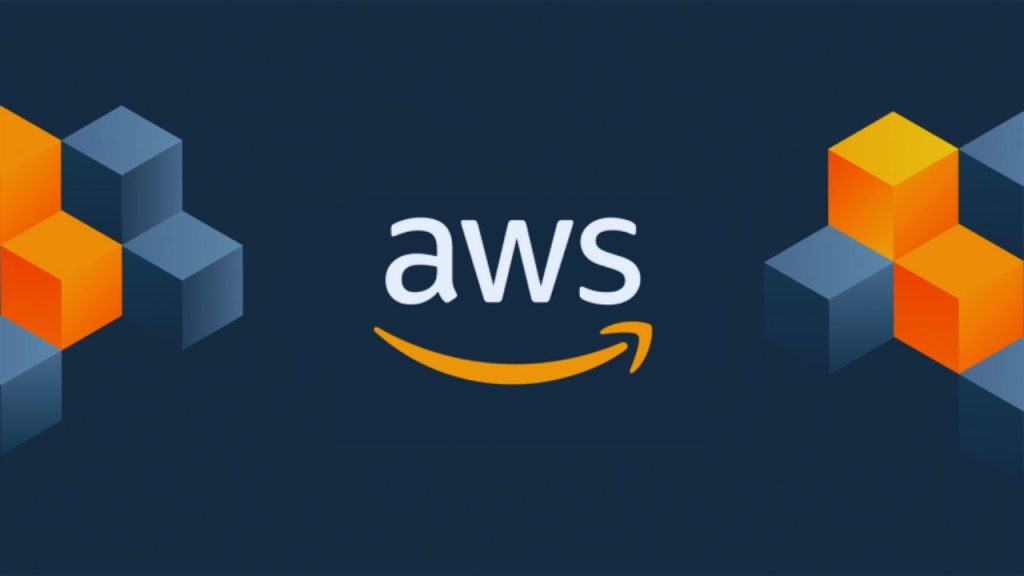
In this thorough guide, we’ll present you with a step-by-step approach that covers everything from basic ideas to complex issues such as architecture, security, and cost optimization. With this plan, you’ll be able to learn at your own speed and develop skills that will help you grow in your job. So, let’s dig in and start your path towards being an expert in AWS cloud services!
Read More : How To Get $1,000 AWS Credit Free For SaaS In 2023
Introduction
Welcome to the best AWS Cloud Learning Plan for Beginners in 20 Days! This thorough tutorial is meant to help you obtain an in-depth grasp of Amazon Web Services (AWS) cloud computing in only two months. Whether you’re an IT expert, a developer, or simply someone interested in cloud computing, this article is for you.

AWS is the premier cloud computing platform in the world and is utilized by enterprises of all sorts, from tiny startups to major multinationals. As more and more firms transfer their operations to the cloud, the need for individuals who understand AWS is continuously expanding. By studying AWS, you’ll be prepared with the skills and knowledge to take advantage of the various career possibilities accessible in the market.
This book is constructed in a way that allows you to start from the very fundamentals and progressively graduate to more sophisticated subjects. By following the strategy, you’ll learn about AWS services, storage solutions, computing possibilities, security precautions, and much more. You’ll also have the opportunity to practice and apply your knowledge through hands-on activities and projects.

We recognize that learning a new technology may be intimidating, but this tutorial is aimed to make the experience as simple and fun as possible. So, let’s get started on your road to being an AWS Cloud expert!
Why AWS Cloud Computing is Important
AWS Cloud computer is essential because it allows consumers and enterprises to use a wide range of computer resources on demand. This implies that customers may simply and rapidly access computer servers, storage, databases, and other services without having to develop and manage their own physical infrastructure. This not only saves time and money but also gives a degree of agility and flexibility that is impossible to attain with traditional on-premises computing.

One of the primary benefits of AWS Cloud Computing is scalability. With AWS, users can simply scale up or down their computing capacity based on their needs. This implies that during moments of high demand, customers may quickly and inexpensively add extra capacity to guarantee that their applications and services continue to run properly. Conversely, during periods of low demand, consumers might cut back their resources to save expenses.
Another important feature of AWS Cloud Computing is its worldwide reach. With AWS, customers can simply deploy their apps and services to data centers across the world. This helps users to give a speedy and dependable experience to their clients, no matter where they are situated.

Finally, AWS Cloud Computing delivers a high degree of security and compliance. AWS has earned a variety of certifications and accreditations, including ISO 27001, SOC 1, and SOC 2. This implies that users can trust AWS to deliver a safe and compliant environment for their apps and data.
Cloud Computing Fundamentals
Before going into the realm of AWS, it’s vital to grasp the principles of cloud computing. Cloud computing is the delivery of computer services over the internet. It gives on-demand access to resources like as servers, storage, and databases, allowing enterprises to easily scale up or down as needed.

To get started with cloud computing principles, begin by studying about the three distinct types of cloud computing models: Infrastructure as a Service (IaaS), Platform as a Service (PaaS), and Software as a Service (SaaS).
IaaS gives consumers with access to virtualized computing resources such as servers, storage, and networking. PaaS offers customers with a platform to build, execute, and manage applications without having to worry about the underlying infrastructure. SaaS offers consumers with access to software applications that are hosted on a cloud provider’s infrastructure.
Additionally, it’s crucial to grasp the benefits and hazards involved with cloud computing. Benefits include scalability, cost-effectiveness, and adaptability. Risks include security problems and possibly vendor lock-in.

By learning these principles, you’ll be better able to navigate the world of AWS cloud computing and make educated judgments about which services to utilize for your company.
AWS Services Overview for Beginners
As a novice, it’s necessary to gain an understanding of the AWS services offered. AWS offers a wide range of services, from computation and storage to machine learning and database administration. Understanding these services will assist you to pick the best ones for your projects and needs.

The most basic AWS services include Amazon EC2 (Elastic Compute Cloud), Amazon S3 (Simple Storage Service), and Amazon RDS (Relational Database Service). Amazon EC2 allows you to construct and execute virtual computers (known as instances) in the cloud, while Amazon S3 provides secure, persistent, and scalable object storage in the cloud. Amazon RDS delivers managed relational database services that are easy to set up, administer, and grow.
AWS also offers more complex services such as Amazon Lambda, Amazon ECS (Elastic Container Service), and Amazon SageMaker. Amazon Lambda is a serverless computing solution that allows you to run code without creating or managing servers. Amazon ECS is a fully-managed container orchestration solution that allows you to simply run and grow Docker containers. Amazon SageMaker is a fully-managed machine learning service that allows you to develop, train, and deploy machine learning models at scale.

It’s vital to understand that AWS services can interact with each other to generate more complicated solutions. For example, you can use Amazon S3 to store data and Amazon Lambda to handle the data with code. Understanding the services and their features is crucial to designing efficient and successful solutions on the AWS platform.
Read More : Robots From CHINA Are Taking Over The World In 2023
AWS Account Setup and Management
Setting up and maintaining your AWS account is a vital step in your cloud computing journey. AWS makes it incredibly easy to register an account and get started with their services. The first step is to visit the AWS website and sign up for a free tier account. This will offer you access to several of their services for free, for a short amount of time.
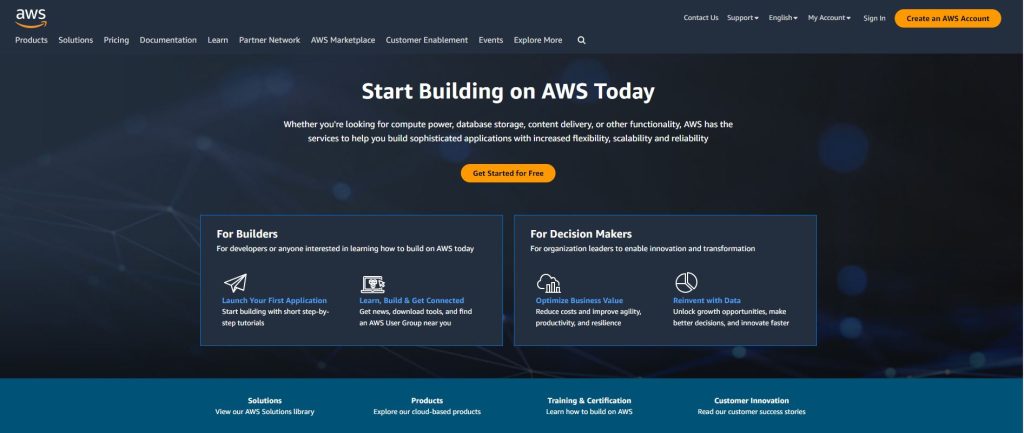
Once you join up, you will need to submit some basic information such your name, email address, and payment card information. Don’t worry, AWS will not charge your card until you utilize their commercial services over the free tier restrictions. After that, you will need to authenticate your account by providing a phone number and inputting a code that you get by SMS or voice call.
Once your account is authenticated, it’s time to set up your security credentials. This involves establishing an Access Key and Secret Access Key that you will need to access your account programmatically. It’s crucial to keep these credentials safe and not share them with anybody.
Next, you will need to set up Multi-Factor Authentication (MFA) for your account. This provides an extra degree of protection to your account and is highly recommended. You may use an authenticator software like Google Authenticator or a hardware device like YubiKey for this.
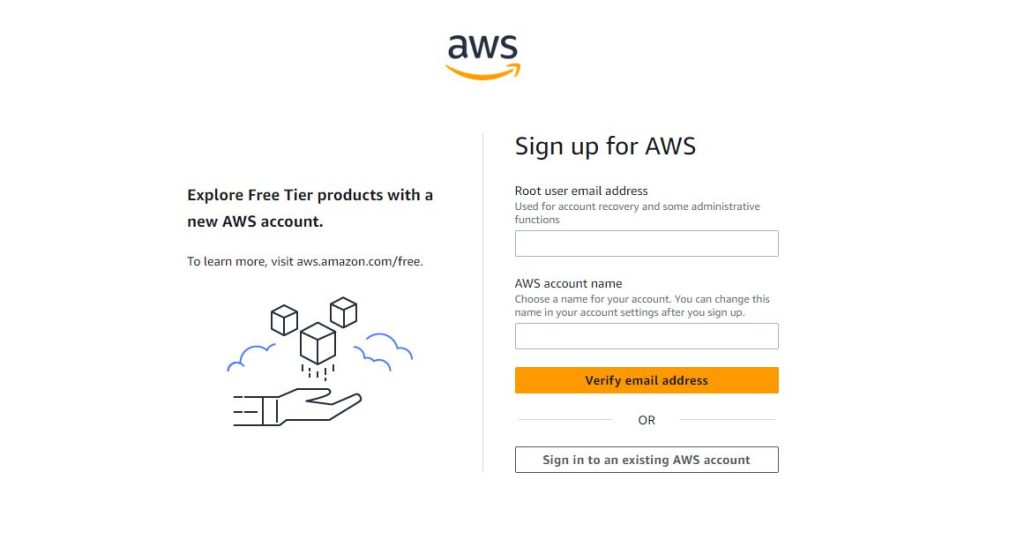
Finally, you will need to set up billing for your account. AWS will immediately create a billing account for you, and you can set up alerts and budgets to monitor your consumption and expenditures. It’s crucial to keep an eye on your prices and minimize your consumption to avoid any surprise bills.
Overall, setting up and administering your AWS account is a basic procedure. It’s crucial to follow best practices for security and cost management to have a great experience with AWS cloud computing.
Understanding AWS Compute Services
AWS Compute Services are a critical component of the AWS ecosystem. These services offer the processing power necessary to operate applications and services. AWS provides a number of computing services to fit different requirements. Understanding these services is crucial for anybody trying to create and deploy apps on AWS.

AWS EC2, or Elastic computing Cloud, is the most popular computing service supplied by AWS. It allows users to launch and manage virtual computers in the cloud. This provides a versatile and scalable method for operating applications and services.
AWS Lambda is another computing function supplied by AWS. It lets you to run programs without provisioning or maintaining servers. This is a wonderful solution for running tiny, event-driven apps.
AWS Elastic Beanstalk is another popular computing service supplied by AWS. It helps users to deploy and operate apps in the cloud, without worrying about the underlying infrastructure. This is an excellent option for developers who want to focus on designing apps, rather than maintaining infrastructure.

Understanding the different AWS Compute Services and when to utilize them is critical for creating and deploying apps on AWS. By mastering these services, you may design scalable and robust apps that can satisfy the expectations of your consumers.
Understanding AWS Storage Services
Understanding AWS Storage Services is a necessity for anybody wishing to work with AWS. This is because AWS offers a wide range of storage solutions, each having its own unique set of capabilities and use cases.

To start with, it’s vital to grasp the distinction between Object Storage and Block Storage. Object storage is good for storing unstructured data such as photographs, movies, and documents, whereas Block storage is suitable for organized data such as databases.
AWS offers two primary object storage services: Amazon S3 and Amazon Glacier. Amazon S3 is a highly scalable and secure storage solution that allows you to store and retrieve massive volumes of data from anywhere in the globe. It’s utilized by many enterprises for backup and disaster recovery, as well as for providing static assets such as photographs and videos on websites.
Amazon Glacier, on the other hand, is a low-cost storage solution that’s meant for archiving and long-term backup of data that’s seldom accessed. It’s perfect for enterprises that need to store big volumes of data for regulatory or compliance reasons.

When it comes to Block Storage, AWS offers three key services: Amazon EBS, Amazon EFS, and Amazon FSx. Amazon EBS is a block-level storage solution that’s utilized for EC2 instances, whereas Amazon EFS is a fully managed NFS file system that can be shared across many EC2 instances. Amazon FSx is a fully managed file system service that’s geared for Windows and Linux workloads.
By knowing the distinctions between various storage services and their use cases, you’ll be able to pick the correct storage choice for your application and optimize your expenditures.
Understanding AWS Database Services
When it comes to cloud computing, databases are at the foundation of the entire system. Amazon Web Services (AWS) offers a wide selection of database services to cater to varied customer requirements. Understanding AWS database services is vital for anybody wishing to work in cloud computing.

AWS offers two basic sorts of databases – relational databases and NoSQL databases. Relational databases employ tables and columns to store data while NoSQL databases use documents, graphs, and key-value pairs.
AWS includes a number of relational database services including Amazon RDS, Amazon Aurora, and Amazon Redshift. These services are meant to provide managed database solutions that are scalable, dependable, and secure. On the other hand, AWS offers a number of NoSQL databases like Amazon DynamoDB, Amazon DocumentDB, and Amazon Neptune. These databases are intended to manage massive volumes of unstructured data and are very scalable.
To get started with AWS database services, it’s vital to have a strong grasp of databases in general. Once you have a strong foundation, you can start investigating AWS database services and learning about their capabilities, advantages, and use cases. AWS offers a number of tools including documentation, tutorials, and training courses to help you get started.

By knowing AWS database services, you can make educated judgments about which database service to utilize for your application, based on your requirements and budget. This can help you enhance your application speed, decrease expenses, and improve user experience.
Read More : The Ultimate Guide to Making Your First $100,000 Online in 2023
Understanding AWS Networking Services
AWS Networking Services is a critical component of the AWS Cloud Learning Plan. Networking services give the tools to connect diverse computing resources, such as virtual machines, databases, and storage systems, within an AWS cloud. Understanding how to design, create, and manage AWS networking services is vital for any cloud computing expert.

AWS provides many networking services to help enterprises grow and protect their operations. Some of the key AWS networking services are Amazon VPC (Virtual Private Cloud), Amazon Route 53 (DNS service), Amazon CloudFront (CDN service), and AWS Direct Connect (dedicated network connection).
Amazon VPC allows you to construct a private, isolated virtual network within the AWS cloud. You may configure your VPC with your own IP address ranges, subnets, and routing tables to build a secure and adaptable environment for your resources. Amazon Route 53 is a highly scalable and stable DNS service that helps route end-users to internet applications by converting domain names into IP addresses.
Amazon CloudFront is a content delivery network (CDN) service that securely distributes data, videos, apps, and APIs to clients internationally with low latency and high transfer rates. AWS Direct Connect provides a dedicated network link between your on-premises data center and AWS cloud architecture.

In order to learn AWS Networking Services, newcomers need start with the basics of networking, such as IP addressing and subnetting. Then, students may go on to learning the various AWS networking services and how to configure and manage them using the AWS Management Console or the AWS Command Line Interface.
By knowing AWS Networking Services, novices may build, implement, and run secure and scalable applications on the AWS cloud.
Understanding AWS Security and Compliance
When it comes to cloud computing, security is one of the most crucial factors. AWS offers a comprehensive range of security features that may help enterprises keep their data and applications safe from cyber attacks. In order to become an AWS expert, you need have a thorough grasp of AWS security and compliance.

AWS provides a shared responsibility approach, which means that both AWS and the client are responsible for ensuring that security measures are in place. AWS offers a range of security services and capabilities, including identity and access management, network security, encryption, and compliance with industry standards and laws.
In order to get started with AWS security, it’s vital to grasp the basics of security in the cloud. You should acquaint yourself with AWS security capabilities such as AWS Identity and Access Management (IAM), which allows you to regulate who may access your AWS resources, and AWS Key Management Service (KMS), which allows you to establish and maintain encryption keys for your data.
You should also research AWS network security measures, like Amazon Virtual Private Cloud (VPC), which allows you to construct a private network within the AWS cloud, and AWS Firewall Manager, which allows you to centrally manage and apply rules to all your AWS resources.

Finally, it’s vital to understand AWS compliance and governance. AWS has achieved compliance with a multitude of industry standards and laws, including HIPAA, PCI, and GDPR. Understanding these compliance criteria will assist you verify that your firm is satisfying regulatory obligations while utilizing AWS.
In short, obtaining a thorough grasp of AWS security and compliance is vital for anybody wishing to become an AWS specialist. By familiarizing yourself with the shared responsibility model, AWS security features, network security measures, and compliance standards, you can assist guarantee that your organization’s data and applications are safe and secure in the cloud.
AWS Global Infrastructure and its Benefits
AWS Global Infrastructure is one of the most essential and outstanding features about Amazon Web Services. AWS offers a worldwide infrastructure that covers 77 availability zones among 24 geographic areas throughout the world. Each availability zone represents a group of data centers that are located in distinct physical locations and are connected by high-speed, private fiber-optic networks.

This architecture is meant to deliver high availability, scalability, and resilience to your applications and services. When you deploy your apps on AWS, you may specify the regions and availability zones where you want your resources to be delivered. This allows you to guarantee that your apps are closer to your clients, so they may have better latency and faster reaction times.
The benefits of AWS Global Infrastructure include greater availability, better performance, and reduced costs. With AWS, you can quickly deploy your apps across various regions, which allows you to ensure that your applications are always available to your clients. Additionally, you may leverage services like Amazon Cloud Front and Amazon Route 53 to increase the speed and minimize latency for your users.

Another major benefit of AWS Global Infrastructure is that it allows you to decrease costs. By spreading your resources in several places, you may optimize your expenses and decrease the effect of failures and calamities. AWS Global Infrastructure is one of the many reasons why AWS is the most popular cloud platform in the world.
Getting Started with AWS Solutions Architecture
AWS Solutions Architecture is one of the most essential parts of AWS Cloud Computing. As a novice, it’s crucial to grasp what AWS Solutions Architecture is and how it operates. AWS Solutions Architecture is the process of creating and deploying solutions using AWS Cloud Computing. This requires building architecture diagrams, selecting relevant AWS services, and configuring those services to match the needs of the solution being created.
To get started with AWS Solutions Architecture, it’s vital to grasp the fundamental ideas of AWS, including EC2 instances, S3 buckets, and VPCs. EC2 instances are virtual servers that may be deployed on AWS. S3 buckets are used to store and retrieve data in the cloud, while VPCs are used to construct a virtual network within AWS.

Once you have a basic knowledge of these ideas, it’s crucial to learn how to generate and manage architectural diagrams using AWS products like AWS architectural Center and AWS Quick Start. This will help you generate a visual representation of the solution you’re designing and verify that you’re using the proper AWS services to satisfy your objectives.
Overall, getting started with AWS Solutions Architecture is a critical milestone in your AWS Cloud Computing journey. By knowing the key principles and technologies, you’ll be able to build and deploy solutions on AWS that match your business needs.
Read More : 10 Digital Product Ideas You Can Make $10,000 A Month
AWS Certifications: Which One to Choose?
As you grow in your AWS cloud learning journey, you may want to explore gaining AWS certifications to certify your abilities and expertise. AWS provides a number of certifications that appeal to different work categories and degrees of experience. Each certification involves passing an exam, which comprises of multiple-choice and multiple-answer questions.

The most basic certification is the AWS Certified Cloud Practitioner, which covers the foundations of the AWS cloud, including its architecture, security, pricing, and invoicing. This certification is designed for people who are new to AWS and wish to obtain a wide overview of its services and capabilities.
For individuals who desire to specialize in a specific AWS service, there are various associate-level certificates available, such as AWS Certified Solutions Architect, AWS Certified Developer, and AWS Certified SysOps Administrator. These certifications address particular AWS services and demand a better grasp of their design, deployment, and management.
If you wish to show your knowledge in a particular subject, such as security or big data, AWS provides professional-level certificates, such as AWS Certified Solutions Architect – Professional, AWS Certified DevOps Engineer – Professional, and AWS Certified Security – Specialty. These certifications demand deep understanding of AWS services and their interaction with other technologies.

Finally, if you want to become an AWS specialist and oversee large-scale cloud projects, you may seek the AWS Certified Solutions Architect – Master credential. This certification demands a strong grasp of AWS services, their best practices, and their application to real-world applications.
Choosing the proper AWS certification relies on your employment role, career aspirations, and degree of competence. It’s crucial to complete your homework and analyze your talents before committing to a certification. However, gaining an AWS certification might increase your employment chances and indicate your devotion to AWS cloud learning.
Preparing for the AWS Certified Cloud Practitioner Exam
If you’re hoping to get certified as an AWS Cloud Practitioner, there are a few things you need to know before taking the test. The AWS Certified Cloud Practitioner Exam is designed to evaluate your general grasp of the AWS Cloud, its services, and its fundamental architecture.

To prepare for the test, you’ll first need to have a strong grasp of cloud computing fundamentals. This involves comprehending the numerous types of cloud computing models, such as Infrastructure as a Service (IaaS), Platform as a Service (PaaS), and Software as a Service (SaaS).
Next, you’ll want to become familiar with the AWS services and their particular use cases. AWS has over 200 services, therefore it’s crucial to understand which services are most suited for certain use cases.
After knowing the main AWS services, you’ll need to learn about AWS security and compliance. This covers understanding the shared responsibility paradigm, AWS Identity and Access Management (IAM), and security best practices.

Finally, it’s crucial to practice and evaluate your knowledge before taking the exam. AWS provides practice examinations, and there are numerous online tools accessible to assist you prepare.
By completing these steps and committing time and effort, you’ll be well on your way to becoming an AWS Certified Cloud Practitioner.
Preparing for the AWS Certified Solutions Architect Exam
Preparing for the AWS Certified Solutions Architect Exam is a wonderful opportunity to demonstrate your expertise and comprehension of AWS cloud services. The exam is meant to evaluate your ability to develop and deploy scalable, highly available, and fault-tolerant systems on AWS.

To prepare for the test, there are various tools available that you may use to study and practice.
First, you can start by examining the AWS Certified Solutions Architect Exam Guide. This guide describes the subjects that will be covered on the test and gives example questions to help you prepare.
Next, you may take use of the AWS Free Tier to practice building and administering AWS services. This is an excellent opportunity to acquire hands-on experience with AWS and prepare for the test.
Additionally, there are several online courses and practice examinations accessible that can help you prepare for the exam. Some popular alternatives include the AWS Certified Solutions Architect – Associate (SAA-C02) Exam Prep course on Udemy and the practice examinations on the AWS Training and Certification website.

It’s crucial to give yourself adequate time to study and practice before taking the exam. Aim to spend at least 60-80 hours preparing for the test over the period of several weeks or months.
By taking the time to prepare for the AWS Certified Solutions Architect Exam, you’ll be putting yourself up for success and showcasing your experience in AWS cloud services.
AWS Learning Resources: A Comprehensive List
There are various materials available that may assist novices learn about AWS Cloud services. Here’s a complete list of some of the greatest AWS learning resources:
- AWS Documentation: This is the official AWS documentation that covers all elements of AWS services.
- AWS Free Tier: This is a free program that allows you to utilize chosen AWS services for free for 12 months.
- AWS Blogs: AWS offers various blogs that give in-depth information on AWS services and capabilities.
- AWS Whitepapers: AWS has issued a number of whitepapers that address a range of issues relating to AWS services.
- AWS YouTube Channel: AWS has a YouTube channel that offers a wide range of videos, from tutorials to seminars, on various AWS services.
- AWS Training and Certification: AWS offers a number of training and certification programs that will help you build competence in AWS services.
- AWS Community: The AWS community is a fantastic area to interact with other AWS users and receive support with your questions and difficulties.
- AWS Events: AWS sponsors a number of events, including webinars, summits, and workshops, that can help you learn more about AWS services.
- AWS User Groups: AWS User Groups are local groups of AWS users that meet frequently to discuss AWS services and exchange information.
By employing these tools, novices may progressively increase their skills in AWS Cloud services and acquire confidence in interacting with AWS services.
Tips and Tricks for Succeeding in Your AWS Learning Journey
Learning AWS might seem like a big endeavor, but with the correct mentality and strategy, anybody can succeed in their AWS learning journey. Here are some ideas and strategies to help you succeed:
- Set realistic objectives: Set feasible goals for yourself and develop a plan to achieve them. Start with simple goals and then build up to greater ones.
- Learn by doing: AWS is a hands-on platform, thus the best way to learn is by doing. Try to practice what you learn as much as possible. Use AWS free tier to experiment with different services and use cases.
- Join the AWS community: Join AWS user groups and forums to engage with other learners and professionals. This will help you remain up to speed with the newest trends and best practices.
- Take use of AWS resources: AWS provides a multitude of tools to help you learn, including documentation, tutorials, and training courses. Take use of these resources to expand your expertise about AWS.
- Use third-party materials: There are various third-party resources available that may help you understand AWS, including books, blogs, podcasts, and video courses. Explore several alternatives and find what works best for you.
- Practice good time management: Learning AWS requires time and effort, therefore it’s crucial to manage your time properly. Set up specific time each day to concentrate on your AWS learning strategy.
- Stay motivated: AWS might be tough at times, but being motivated is crucial. Remind yourself of why you started and celebrate your success along the road.
With these tips and tactics, you’ll be well on your way to excelling in your AWS learning adventure. Remember, learning AWS is a process, so be patient and persistent. Good luck!
Read More : Top 10 AI Tools For Digital Marketing in 2023
Common AWS Mistakes to Avoid
AWS is a strong cloud platform. However, it’s crucial to realize that mistakes might be made when utilizing it if you’re not attentive. By avoiding these frequent AWS blunders, you’ll be able to utilize the benefits of the platform and ensure a seamless and efficient experience.

One of the most common blunders is not setting up sufficient security measures in your AWS setup. AWS includes a range of security tools, such as Identity and Access Management (IAM), that may be exploited to guarantee your system is safe. Failing to properly set up these precautions might result in data breaches or unauthorized access.
Another error that is commonly made is not appropriately monitoring your AWS infrastructure. It’s crucial to have a thorough grasp of your use and performance indicators in order to optimize your resources and prevent any potential complications.
Cost management is also a significant element to consider while utilizing AWS. As the platform offers a range of services, it might be tempting to overpay on needless resources or features. By using effective cost optimization approaches, such as employing reserved instances or setting auto-scaling policies, you may save money and enhance your overall experience.

Lastly, neglecting to adequately backup your data and resources might lead to serious complications in the case of a disaster or system failure. It’s crucial to have a robust backup and recovery plan in place to guarantee your system can be promptly and effectively restored.
By avoiding these typical mistakes and being vigilant in your AWS usage, you can make the most of the platform and accomplish your intended goals.
Future of AWS and Cloud Computing
The future of AWS and cloud computing is bright and full of possibilities. As of 2021, AWS is continually growing its technological offerings, introducing new features and services to its already powerful arsenal.
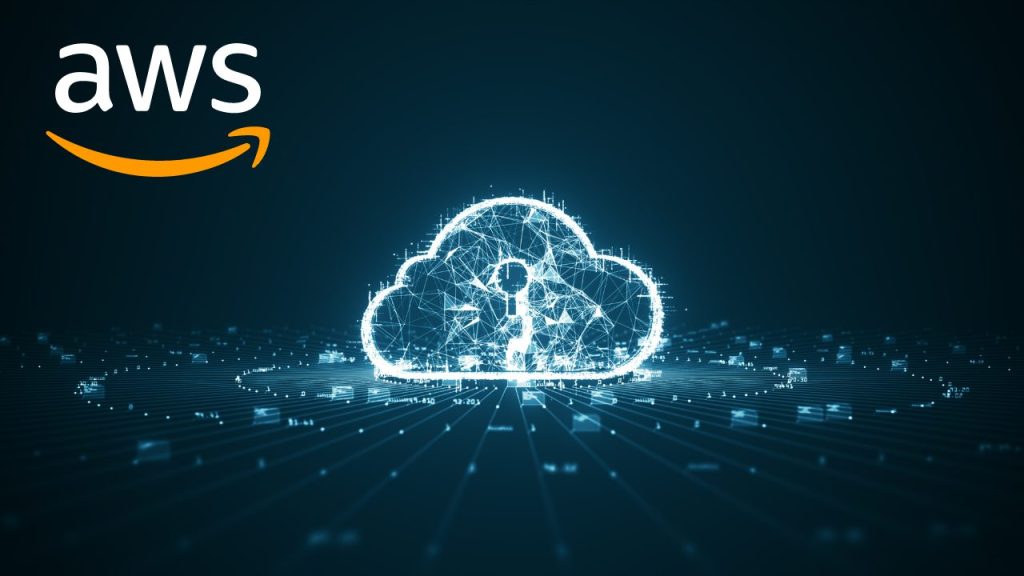
AWS is also investing substantially in Artificial Intelligence and Machine Learning, which means that developers and companies alike will be able to take use of these powerful technologies to better their products and services.
In addition, AWS is currently concentrating on hybrid cloud solutions and edge computing. This implies that enterprises may now have the best of both worlds, with the capacity to operate apps and workloads in the cloud, on-premises, or at the edge of the network.
The importance of cloud computing has only risen with the rising number of organizations migrating their activities online, especially in the aftermath of the COVID-19 outbreak. Cloud computing provides organizations the flexibility and scalability they need to adjust to changing market conditions and client demands fast.
As more and more organizations go to the cloud, the need for cloud specialists is also on the increase. This implies that possessing AWS cloud skills will be more valuable than ever before, making it a sensible decision for anybody trying to future-proof their career.
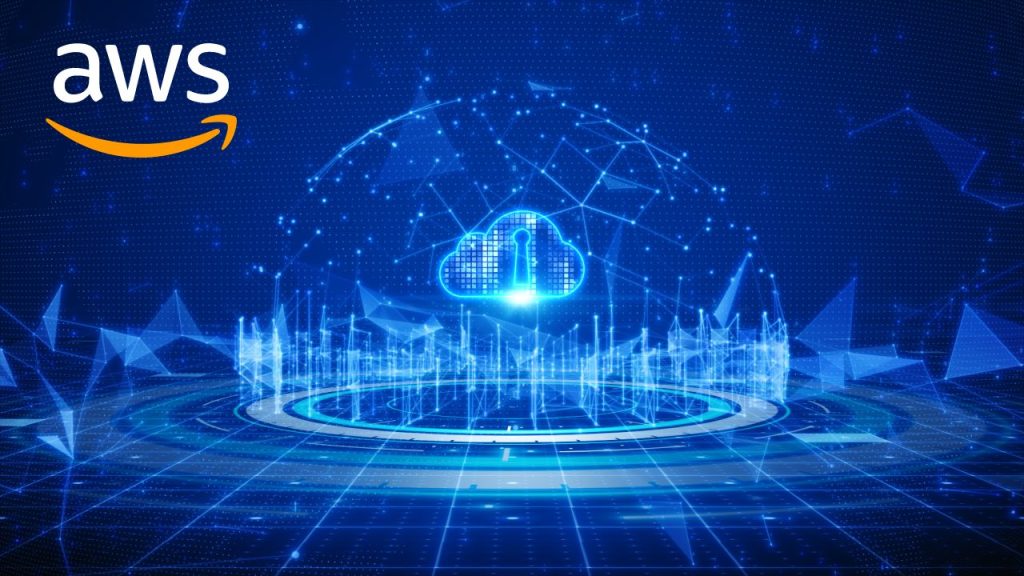
In summary, the future of AWS and cloud computing is bright and full with prospects. As technology continues to grow, AWS will likely play an important role in influencing the future of cloud computing. As a novice seeking to get started on the AWS cloud, now is the best moment to get started and take advantage of everything that the platform has to offer.
Conclusion
Congratulations! You have finished the greatest AWS cloud learning plan for beginners in 20 days. We hope this book has been useful in providing you with the core information necessary to launch your career in cloud computing with AWS. By following this study plan, you have learnt some of the most important principles of AWS, including starting an EC2 instance, setting up an S3 bucket, configuring VPC and security groups, and much more.
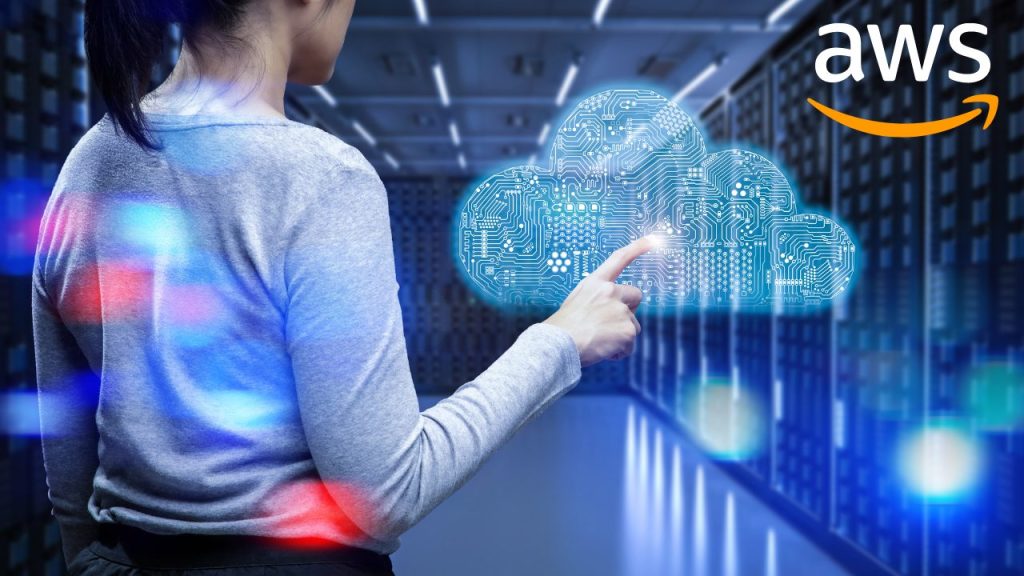
Remember, AWS is always growing, and it is crucial to remain up-to-date with the newest innovations. Therefore, we urge you continue to learn and improve by taking advanced AWS courses, attending conferences, and engaging in online forums and communities.
We hope this study plan has helped you obtain the confidence and knowledge needed to pursue a career in cloud computing with AWS. With dedication, practice, and tenacity, you can become an AWS expert in no time. Best of luck with your cloud adventure!
We hope you found our Ultimate AWS Cloud Learning Plan for Beginners helpful and enlightening. AWS is a robust cloud platform with numerous benefits for organizations and consumers alike. Over the course of 20 days, we’ve provided you a roadmap to acquire all the critical skills necessary to become an AWS cloud expert.

We encourage you to stay motivated and keep practicing the concepts and skills you’ve learnt. It’s a great moment to be in the cloud computing sector, and we wish you all the best on your AWS learning adventure!
More FAQ For AWS Learning
Can I learn AWS in 3 months?
Some providers recommend roughly 80 hours over a duration of 2 months to study for the Solutions Architect Associate test with prior experience, or 120 hours over 3 months with no prior experience using AWS.
Can I learn AWS without experience?
Is it possible to learn AWS without prior IT experience? Yes. Without an IT background or degree, it is possible to study AWS and become certified if the necessary training hours are fulfilled. This article will address all of your queries about how to obtain AWS certified without IT skills.
Is AWS free for beginners?
AWS For Beginners. Enroll in this free course for a strong foundation in cloud computing and AWS services. Learn about cloud models, deployment, and demos of AWS compute services to obtain critical skills.
Can I get a job with just AWS?
AWS Certifications are quite crucial to start a career and highly useful to get a good work. If we should talk about the benefits of acquiring an AWS certification: This shows that you are a skilled professional and committed to working with passion. You can receive a greater income at your job.
Which AWS cloud certification is best?
The Solutions Architect – Associate certification is our choice for the best AWS cloud certification overall. It is the most popular certification given by AWS and gives a solid foundation in AWS cloud computing. IT experts with this qualification are also among the highest salaries in the sector.
Read More : How To Make $1000 A Day With Affiliate Marketing In 2023

Hello I am Habib Hasan. I am an Internet Marketing Expert, Business Advisor, Programmer and Tech Advisor with skills in Technical SEO and Web Design, Web Developer.
